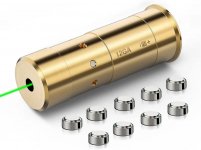Wind River
Well-known member
Civilized hell, if you crippled a bird you half killed it. Only one reason you carry a gun when hunting. Stay home and hunt on a video, you can release them that way and avoid cripples.
That sounds GucciYou don't need to use the word kill. That is morbid. You should use the word dispatch. That is more civilized.
I will say "kill" or "dispatch" as long as the bird folds on contact.You don't need to use the word kill. That is morbid. You should use the word dispatch. That is more civilized.
Appreciate your insights. Have your lessons produced results?I started taking lessons from a Pro about 3 years ago. I’d have someone with experience check your fit. Like others have stated you can start with a mount, my regiment is dry mounting with a mini mag light in my gun, a good mount will keep the light on the target through the entirety of the mount. From there it goes to pulling the trigger once fully mounted. You can also practice your mount in front of a mirror to see if you are tilting your head. I also practice a fair amount shooting clays. I use a champion workhorse with remote, it’s under 300 bucks. I practice basic incomers, going away and crossers. It really helps to have a coach in my opinion.
View attachment 10504
I have been recording my hunts for a long time. Nothing formal. I enjoy watching my adventures with my dogs.Maybe it is just too many distractions, try using one dog and dump the camera, you have created too much stuff going on. I am not sure what is with the new trend of recording and posting your hunts these days. Maybe cameras have got smaller and cheaper. Kind of like buying a GSP collar instead of watching your dog. Tech gadgets.
I appreciate the comments. I do agree that hunting with both girls has been distracting. I find myself confused on who to follow when we find more than bird. I don't know if I can leave 1 in the truck with being overwhelmed with guilt. Advice taken.Matt D
I am right handed left eye dominant. When I found that out I started shooting left handed. Made a big improvement.
Walk 213
I’d suggest slowing down with the first shot and then practice mounting the gun with a mag light in the barrel so the you know exactly where the gun is pointed. You can practice that all off season inside. Muscle memory. You can practice swinging the gun left and right along wall joints in your house. I also got an upland sling that I use to help keep my gun in the ready position with the barrel pointed up. Lastly I’d suggest hunting with 1 dog ( unless they point every bird) to help with focus. Not sure on a coach in Denver. I did get a lesson once upon a time with Warren Watson at Kiowa creek but it looks like he’s passed away.
Good advice. I did notice that I seemed shocked with the flush even though my dogs told me that the bird was close. It's a weird feeling that has not hit me before.One I’ve noticed when I’ve shot poorer (fairly common still let’s be honest) is sometimes reacting negatively to a flush like you’ve said you have issue with. Even if I’m in a ready position, a loud takeoff flush can spook me a bit. Pheasants are no grouse when it comes to that, but idk it just gets to me when it wants to. I’ve tried an ear plug or muff on my shooting ear this year, and I think that’s helped ease that initial shock and taken aback reaction when they get up.
It allows me to focus more so on the shot. In the past, I would feel like I needed to pop a shot off quickly after a reaction since they’d soon be out of range, but it usually ended up with a rushed miss and a longer second shot.
On it. Thank you.Years ago I attended one of Gil Ash’s traveling shotgun schools. Two all day sessions, best money I have spent! I found out I’m left eye dominant, but his methods transformed me! Worth investigating! Good luck!
I have one of these in red and one in green. Either would work for the above drill too.Walk 213
I’d suggest slowing down with the first shot and then practice mounting the gun with a mag light in the barrel so the you know exactly where the gun is pointed. You can practice that all off season inside. Muscle memory. You can practice swinging the gun left and right along wall joints in your house.

Hi Gil Ash will be in Bennett Colorado teaching a seminar on many of the topics folks have shared above , he does it in a logical way after listening to your goals individually. IMO the one day course will not gain you a full spectrum of knowledge and muscle memory, consider the two day course .he will be in your neighborhood may 2-4. He teaches only 5 students at a time. Sign up early .!!!On it. Thank you.
A Briley Light Mod is hard to beat on pheasants. It stays in my gun all season.A5s #4 and #5 in my opinion, are the most important things you can do (watch dog and be ready). I would add pheasants are much easier to shoot inside of 30 yards using an IC choke, particularly (if you are not a super shot (which is me). I think most of my shooting is inside of 40 yards (mostly due to the IC choke) and if is isnt't, it is likely my 3rd shot, I usually stop after 2 , but at least 3 times I used 3 shots (got 2 of those) and once a 4th and got that one. If they start much more than 30 yards to start, I will usually wait for an easier (closer) one.
You are a prodigyI don't know how everyone else shoots, but I am much slower at pulling the trigger than walk213. He looks rushed and pulling the trigger way too quick for me. My entire hunting career, I have shouldered the gun on every hawk, sparrow, black bird, meadowlark, and follow with the bead pretending it is a pheasant. I also shoot a lot doves. 211 this past year. I generally only take 2 boxes of shells for each hunt. We always see how few of shells it takes to get our limit. I won't miss but about 2 or 3 pheasants the entire year. This year I bagged 20 birds.
I get it. I do try to move forward after a miss. That said, it was so bad this season that I never attempted a challenging shot. My confidence was low, so I was always hoping that a rooster would be close and late to pop up. I will look up that book. Thank you.Never dwell on what you’ve done wrong. If you do you’ll keep doing it. Think about what you did right. I don’t think about the birds I miss. I think about the birds I kill.
I know that Lanny Bassham generally deals with competitive shooting “With Winning in Mind” but some of his thought processes can apply to shooting under hunting conditions. I read and reread it all the time. It has certainly improved my mindset for competitions as well as hunting.
